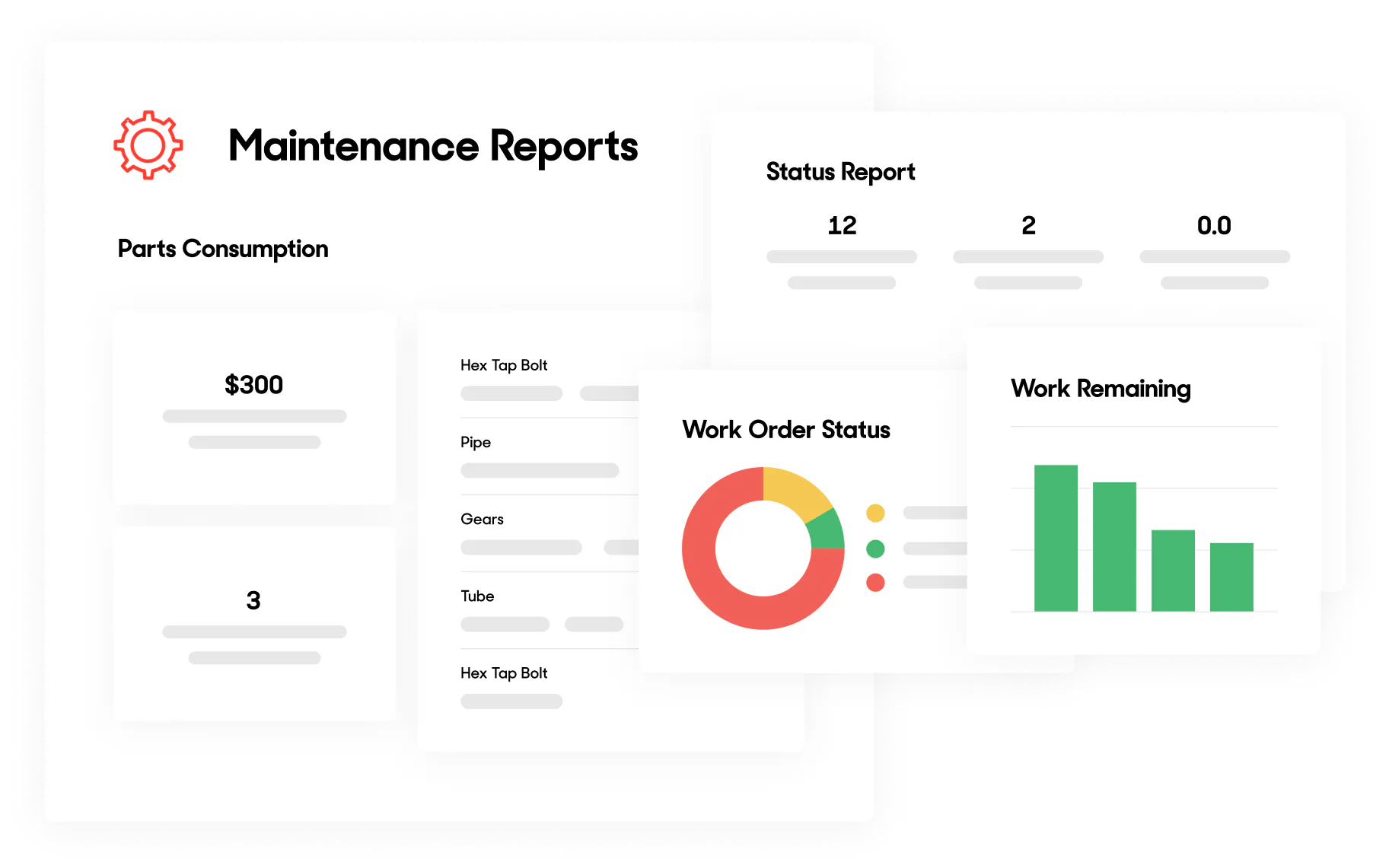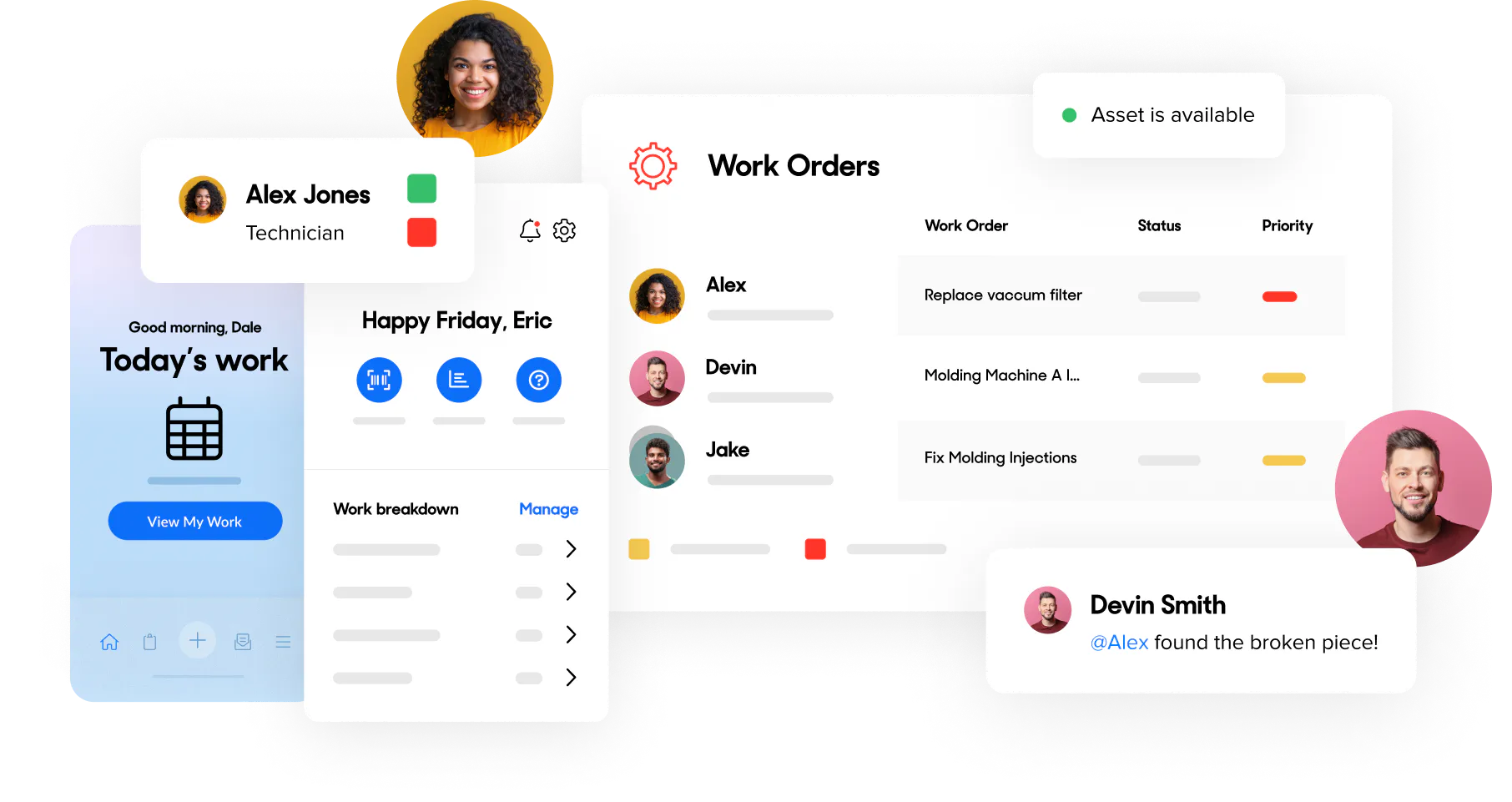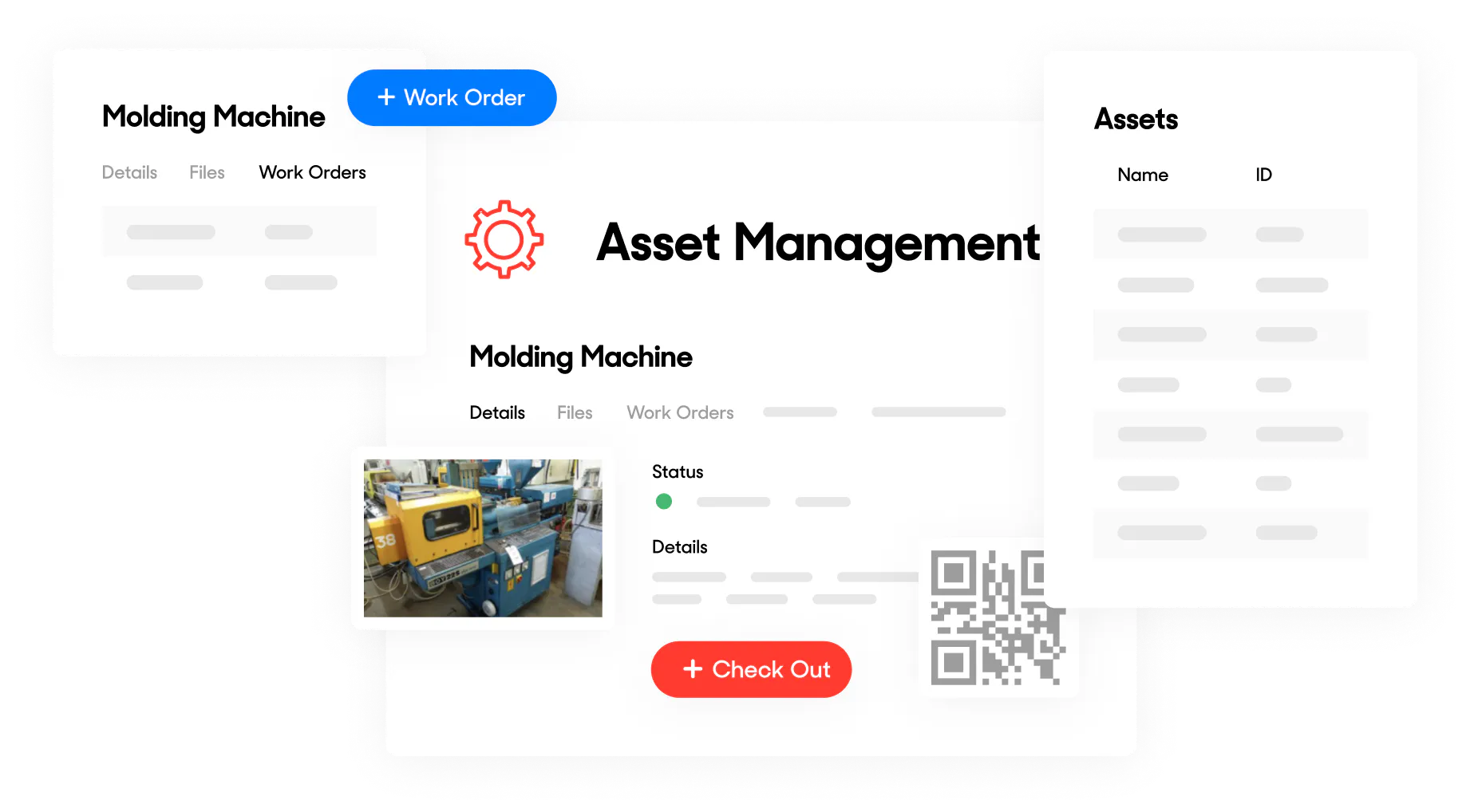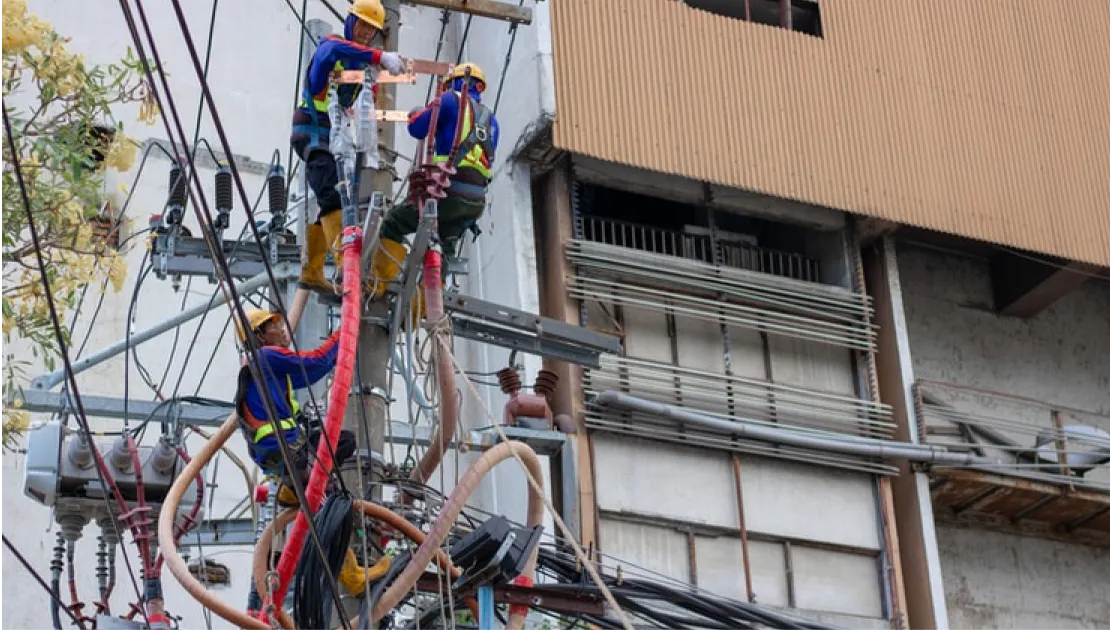Facility Maintenance Software
Make facility maintenance requests front and center
With UpKeep’s facility management software, your maintenance team can plan for today, tomorrow, and beyond with agility and confidence.
No credit card required.

90%
Reduction in technician time spent filing work orders and locating asset information
315%
Return on Investment
$638K
Savings from avoided production downtime
Source: Study conducted through a third party through Forrester. Download the full report here.
Achieve your best response times to maintenance requests with facility management software
Increase transparency and visibility into work orders
Reduce response times for work order completion
Streamline maintenance requests in one place
Reduce equipment downtime with preventive maintenance
Easily run beautiful reports and data visualizations
Provide clear documentation of inspections
Explore Case Studies
Explore more case studiesUpKeep Experts Here To Help You
Incomparable Training, Implementation, and Support, to ensure your success

Support
Help Center

24/7
Customer Support

Book
We Wrote the Book on Asset Operations!
UpKeep brought maintenance, reliability, and operations teams together in a new approach called Asset Operations Management. Now, we've written the book! We're thrilled to announce the publication of Asset Operations: The Future of Maintenance, Reliability, and Operations.
Streamline facility management on-the-go
Mobile Features for Facility Management Software

Centralize all of your work requests with a mobile facility maintenance solution.
Never waste time looking for a work request. Unlimited free requesters can submit work requests and track the status of their requests.
Technicians can easily track all time spent on tasks using a timer. Reliable data collected directly from technicians' smartphones helps managers plan realistic PM schedules.
Reduce interruptions and accomplish more work. Replace radio chatter and phone calls with comments and updates on the status of work orders.

CMMS, Maintenance Managament, and Work Order Software
UpKeep is consistently rated the best inventory management software in value for money, ease-of-use, functionality, and customer support. There’s a reason UpKeep has more 5-star reviews than any other CMMS and Maintenance Software vendor.
Reduce your equipment and asset downtime by up to 26%
Extend your asset and equipment lifetime by up to 11%
Achieve up to 652% ROI by integrating UpKeep into your workflow
Improve overall facility condition with the integration of UpKeep
It’s unlikely that Aristotle was thinking about facility management when he said “the whole is greater than the sum of its parts,” yet this well-known saying applies. Individual assets, systems, and equipment have a much greater value when they work together to make a facility as a whole operate efficiently, comfortably, and profitably for a business.
Asset operations management (AOM), which focuses on connecting and elevating maintenance, operations, and reliability to a profit center, can play a large role in making facility management more efficient and effective.
What Is Facility Management?
According to the International Facility Management Association (IFMA), “facility management is an organizational function which integrates people, place and process within the built environment with the purpose of improving the quality of life of people and the productivity of the core business.”
Essentially, facility management encompasses all those things we take for granted in any building that make the experience of employees, customers, and other visitors a positive one. It includes safe and efficient parking, a secure and welcoming entry, the heating and cooling system, all equipment and machines within, and all those accessories and systems that operate in the background of any building.
Why Is Facility Management Important?
The importance of facility management may be most appreciated when it’s done poorly. Uncomfortably cold conference rooms, unkempt restrooms, broken machinery, or safety hazards stand out to all those trying to work in a particular building.
Facility management is important because it keeps all aspects of a building running smoothly and efficiently, supporting the environment that helps employees stay productive and safe. Done well, facility management can also reduce overall energy costs and optimize maintenance resources. Here are some industry facts that illustrate the importance of facility management. It helps to:
Use Space Effectively. Because real estate is one of the top costs for any business, using space effectively through good facility management can help an organization save upwards of 30 percent.
Manage Capital Projects. Most capital projects go over budget by 80 percent and may run nearly two years behind. Facility management efforts that incorporate project management technology can help reduce those costs and tighten the timeline.
Reduce Wasted Employee Time. In this country alone, employees spend more than 160 million days each year looking for conference rooms, offices, desks and equipment, and fellow teammates. Facility management can help manage and communicate location of people and items more effectively.
Decrease Turnover. Although a work environment may not immediately come to mind in examining turnover, a comfortable and safe building means higher employee engagement. This, in turn, reduces turnover by nearly 60 percent as well as absenteeism by 41 percent while boosting productivity by 17 percent.
Increase Building Efficiency. Smart building technology that’s integrated can help organizations boost efficiencies of up to 50 percent.
What Are Common Facility Management Tasks?
Since facility management can encompass any organization that operates a building, common tasks are many and widely vary. It can be useful to think of facility management tasks in two major categories: hard and soft services.
Hard Services
Hard facility management services involve the infrastructure and physical functioning of a built environment. Some common hard services include:
Campus Design and Planning. Facility management can extend to an entire property, which includes landscaping and lawn care tasks, parking lot and garage care, and expansion strategy and plans.
Maintenance Programs. Reactive, preventive, and predictive maintenance systems are usually handled by facility managers.
Electrical and Plumbing Systems. Everything from overhead lighting to restroom plumbing and all their supporting systems must be managed and maintained.
Safety and Security. Physical related safety systems such as fire prevention equipment, motion-detector lights, and physical locks and keycard systems fall under hard services.
Soft Services
Building Services. Facilities management often handles things like waste disposal, support staff management, workspace planning and organization, catering and food service, and contractor management.
Safety and Security. The work process related aspects of safety and security including procedures and enforcement fall under soft services.
Indoor Climate and Air Quality Control. All aspects of a heating, ventilating and air conditioning system as well as the duct delivery system, air filtration, and humidity control systems are managed by the facility management team.
Environmental and Regulatory Compliance. Ensuring an organization meets or exceeds environmental, health, or regulatory requirements falls under soft facility management as well.
What Does a Facility Department Look Like?
Depending on the size and type of organization, a facility department could range from one facet of the owner’s job to a large team with its own manager and team members.
In very small businesses, facility management may simply be one of many things an owner or supervisor manages. If physical space is rented, for example, most of the facility management tasks may be handled by the building owner, leaving only a few pieces of equipment or processes for the business itself.
In small- to medium-sized organizations, one facility manager may be in charge of handling the majority of the tasks, bringing in experts or contractors when needed. For example, a facility manager may take care of preventive maintenance, basic repairs, building services, and room reservations but hire plumbers, electricians, and HVAC specialists when problems arise or for annual cleanings and inspections.
In large organizations, a facility manager may head a big department, supervising a team of technicians and employees who specialize in particular areas. A maintenance technician may be responsible for handling work orders, a reliability engineer may be looking at root causes of failures and performing analysis, and an administrative assistant may handle conference room or other space reservations and process-oriented tasks.
What Are Benefits of Good Facility Management?
When a facility is managed well, things simply run smoothly for all those working and using the building. Here are a few tangible benefits an organization may experience:
Cost Reduction. If facility management is done proactively, an organization can easily reduce emergency repairs, which can be very expensive compared with preventive tasks.
Safer Environment. When repairs are made in a timely way, the work environment can be safer for all employees. This can encompass basic fire safety and alarm systems as well as ensuring faulty machinery is repaired before it becomes dangerous.
Efficiency Improvement. Ideally, all assets are working at optimal levels at all times, helping to keep employees productive and equipment functioning well. Facility management can help support that goal.
Regulatory Compliance. In some industries, complying with governmental regulations is critical to staying in business. A strong facility management program can ensure an organization has records to easily pass inspections and audits.
Productive Employees. Everything from a comfortable work environment to operating machines can add to the productivity of operators, employees, and technicians. Facility management can ensure both the tools and the environment support a positive workplace.
Longer Asset Lifespan. By taking care of critical assets, an organization can often extend their life cycle significantly, reducing the need to replace an expensive machine as well as all the costs associated with replacement.
Customer Satisfaction. Along with productivity comes meeting customer expectations. If production lines are working at optimal speeds, it’s more likely that a business can meet or exceed customer expectations, resulting in fewer complaints, more customer loyalty, and higher profits in the long run.
Skills Necessary for Facility Managers
Whether a facility manager is a one-person department or responsible for a whole team of technicians, certain skills and training are necessary for success.
Most facility managers have started their careers as a maintenance technician, building manager, or even mechanical engineer. After years of experience in a related field, they are qualified to begin overseeing many of the facility management tasks that exist.
While educational backgrounds may vary from a high school diploma, an associate’s degree, or a bachelor’s degree in a related field, many of the skills of a good facility manager are acquired on-the-job. In addition, several facility management certification programs are available to provide additional training. Candidates may choose to earn one or more of the following designations: Facility Management Professional (FMP), Certified Facility Manager (CFM), or Sustainability Facility Professional (SFP).
Keeping a building or facility operating smoothly each and every day takes a special individual that is good at multitasking and problem-solving as well as working with a variety of individuals. Here are some needed skills:
Multitasking. Facility managers may be handling multiple unrelated issues at the same time so being able to keep details straight in a variety of scenarios is key.
Leadership. A multitude of decisions must be made in a given day including which problems are the highest priority and what strategy would be most effective. Confidence and leadership are required.
Maintenance. Handling maintenance requests is usually a large part of facility management so having the skills and knowledge to handle repairs and basic maintenance tasks is important.
Risk Management. A facility manager must be able to make good decisions to minimize accidents while managing limited resources.
Technology Savvy. Understanding the technology that runs a facility management system will be critical in optimizing its performance.
Communication. Not only will facility managers need to communicate, instruct, and motivate technicians but will also need to deal with many people who are submitting complaints, concerns, and requests.
What Is Facility Management Software?
Facility management software is technology that has been designed to help facility managers handle the myriad of details that must be tracked, communicated, and stored to create a long-term, sustainable, and effective facility management program.
At the heart of facility management software is the ability for employees or other users of a facility to submit work requests to a facility management team, alerting them of the need of a repair or request. Ideally, a detailed form along with the ability to capture images can be accessed by smartphone, providing all the necessary information to fulfill the request efficiently.
Once this request is in the system, facility management software can help route the request to the right individual, place it in a priority queue, and provide all the background details, instructions, and historical data at the fingertips of the individual handling the actual work order. After completion, all information is stored within the system so that the management team can run analytics periodically and make smarter business decisions.
For example, if employees notice a machine is suddenly making unusual noises during a shift, they submit a work order describing the problem, along with pictures illustrating the exact location of the noise. The facility manager can schedule a technician immediately or sometime in the next few days, depending on how critical the asset is to the production line. While the technician is inspecting the problem, manufacturers’ guidelines and troubleshooting information can be easily accessed and the technician can see a similar problem was addressed three months ago. If the problem can be resolved, all the work is recorded within the system, including which parts were used out of inventory.
The management team can later review a dashboard that summarizes the performance, maintenance, and failure rates for various assets so that decisions can be made based on data. Perhaps a complete overhaul of the equipment is warranted or a replacement may be needed down the road.
A similar process can be followed with just about any facility management task, from inspecting safety systems to managing landscaping jobs. Ideally, facility management software helps organize all of those tasks effectively and efficiently.
Next-generation technology often focuses on gathering and organizing a myriad of data that can potentially be generated by built environments. For example, many sensors are available today to monitor things like temperature, humidity, and vibration around the clock. Sophisticated meters, gauges, and other smart devices may be monitoring multiple pieces of critical equipment or systems throughout an organization.
All this data can be used to drive actionable insights or send relevant alerts to a facility management team if the right technology is in place. Sophisticated analytics, machine learning, and artificial intelligence solutions that are integrated into a facility management system can help deliver real-time visibility into all aspects of facility management and address potential failures before major damage or a safety incident occurs.
How Asset Operations Management Benefits Facility Management
Because AOM connects maintenance, operations, and reliability into a system that focuses on critical assets, it can significantly benefit facility management. It captures and leverages active and passive data from each functional area to provide a complete asset operations life cycle view for any organization.
UpKeep’s AOM solution is mobile-first and designed for ease of use in the field and office, with an emphasis on painless adoption to help create a single source of record. As a result, facility managers can increase team efficiency and equipment reliability, optimize asset management, and access comprehensive reporting and analytics.
Conclusion
Facility management is something most employees and other users of building or facilities take for granted. As most people go about their days, they don’t notice how important it is for their surroundings to be comfortable and supportive of their tasks at hand.
AOM can play an important role in helping facility managers ensure their buildings, plants, or production lines are optimized, safe, and efficient by bringing together the best of maintenance, reliability, and operations.
Trending Resources

Book
We Wrote the Book on Asset Operations!
UpKeep brought maintenance, reliability, and operations teams together in a new approach called Asset Operations Management. Now, we've written the book! We're thrilled to announce the publication of Asset Operations: The Future of Maintenance, Reliability, and Operations.

Blog
4 Ways to Reduce Facility Costs With Lean Maintenance

Blog
What is Facility Management?
4,000+ COMPANIES RELY ON ASSET OPERATIONS MANAGEMENT
Leading the Way to a Better Future for Maintenance and Reliability
Your asset and equipment data doesn't belong in a silo. UpKeep makes it simple to see where everything stands, all in one place. That means less guesswork and more time to focus on what matters.


![[Review Badge] GetApp CMMS 2022 (Dark)](https://www.datocms-assets.com/38028/1673900459-get-app-logo-dark.png?auto=compress&fm=webp&w=347)
![[Review Badge] Gartner Peer Insights (Dark)](https://www.datocms-assets.com/38028/1673900494-gartner-logo-dark.png?auto=compress&fm=webp&w=336)





